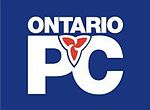


Archived Seat Projections
- Little Change Following Debate
2011-10-03 - New Survey Confirms Dead Heat
2011-09-1426 - Liberals Slip but Still in Minority Government Range
2011-09-20 - New Polls Confirm Liberal Lead
2011-09-14 - Conservative Lead Erodes
2011-09-09 - Ontario Conservatives Just Shy of Majority Numbers
2011-09-02 - Ontario Liberal Campaign Picking Up Steam
2011-08-18 - Conservatives Making Gains in Ontario Election
2011-07-19 - Conservatives in the Lead for Ontario Election
2011-06-20
Little Change Following Debate
Four polls have been reported this past week since the Ontario Leaders's debate. One straddled the pre-debate period, but its results weren't different from the others. What is most remarkable about them is their consistency, and collectively they continue to show a dead heat with the Liberals and Conservatives tied at 34% and the NDP nudging up to 26%. The following projection is based upon a blending of the polls from Environics, Nanos, Leger and Angus Reid conducted between Sept. 26-30, with a total sample size of more than 3500. Other data from the debate showed that NDP leader Andrea Horwath most exceeded expectations and seems to have given her party a small bump, but continues to place third on the question of "who would be the best premier." As mentioned in previous reports, the reason the Conservatives trail the Liberals in seats despite having the same popular support pertains to the small number of seats they lost by less than 10% of in the previous election. This isn't necessarily the final projection from LISPOP. There is apparently another poll from Ipsos to be presented, and if its findings alter the aggregate, a new projection will be issued. LISPOP reminds readers that this is a projection from recent polls, not a prediction of the future. Its reliability is only as good as the polls upon which it is based.
Projected distribution of seats by party, released October 3, 2011
2011 Projection |
2007 Results |
2007 Projection |
|
 |
39 |
26 |
29 |
 |
47 |
71 |
68 |
21 |
10 |
10 |
Note:
The "regional swing model" is more fully explained in a paper originally prepared and presented by Dr. Barry Kay to the 1990 annual meeting of the Canadian Political Science Association, entitled "Improving Upon the Cube Law: A Regional Swing Model for Converting Canadian Popular Vote into Parliamentary Seats". It should be noted that the application of the model above does not make use of the "incumbency effect" described in that paper. In tests for past elections, using late campaign polls to project electoral outcomes, the model has proved to be accurate within an average of four seats per party since 1963. Readers interested in post-dictions for past federal elections dating back to 1963, for projections using pre-election polls dating back to the 1980 federal election and for three Ontario provincial elections, may contact me at bkay@wlu.ca.